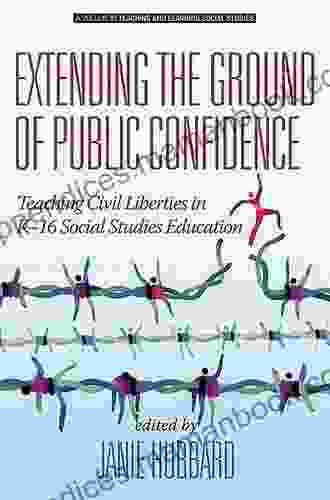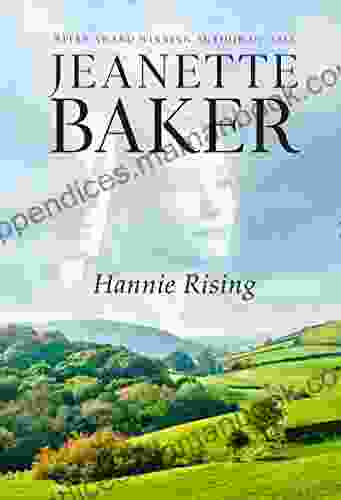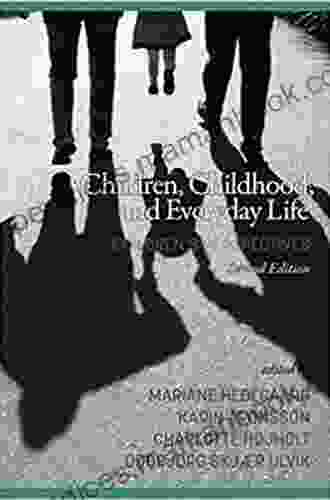Teaching Civil Liberties in the 21st Century: A Comprehensive Guide for Social Studies Educators

In an era where civil liberties are increasingly challenged, it is more important than ever for students to have a deep understanding of these fundamental rights and freedoms. Teaching civil liberties in social studies education is essential for fostering civic awareness, promoting tolerance, and empowering students to advocate for justice. This article provides a comprehensive guide for teachers on how to effectively integrate civil liberties into their social studies curriculum, with a focus on 16 key concepts.
1. Definition and Origins of Civil Liberties
Definition: Civil liberties are the individual rights and freedoms guaranteed by the Constitution and Bill of Rights that protect citizens from government overreach. They include essential rights such as freedom of speech, religion, assembly, and due process of law.
5 out of 5
| Language | : | English |
| File size | : | 8644 KB |
| Text-to-Speech | : | Enabled |
| Enhanced typesetting | : | Enabled |
| Word Wise | : | Enabled |
| Screen Reader | : | Supported |
| Print length | : | 366 pages |
Origins: Civil liberties have their roots in Enlightenment principles of natural rights and limited government. The American Revolution and the adoption of the Constitution established a strong framework for protecting these rights.
2. Freedom of Speech
Alt Text: Students discussing the importance of freedom of speech in a classroom debate.
Definition: Freedom of speech protects individuals' right to express their opinions, even if they are unpopular or offensive. It is essential for a healthy democracy that allows for the free exchange of ideas.
Teaching Strategies:
- Encourage students to analyze historical and contemporary cases involving freedom of speech.
- Facilitate debates where students can present different perspectives and defend their arguments.
- Explore the responsibilities that come with free speech, such as avoiding hate speech and incitement to violence.
3. Freedom of Religion
Alt Text: A diverse group of students practicing different faiths in a school meditation room.
Definition: Freedom of religion protects individuals' right to believe and practice their own faith, or no faith at all. It ensures that religion does not interfere with government affairs or vice versa.
Teaching Strategies:
- Discuss the history of religious freedom in the United States and its evolution over time.
- Invite guest speakers from different religious backgrounds to share their perspectives and experiences.
- Analyze case studies that explore the tension between religious freedom and government interests.
4. Freedom of Assembly
Alt Text: A large group of protesters peacefully gathering in a public park.
Definition: Freedom of assembly protects individuals' right to gather together peacefully for political, religious, or other purposes. It is a cornerstone of democratic societies that allows for collective expression.
Teaching Strategies:
- Examine historic examples of peaceful protests and their impact on societal change.
- Discuss the legal limits of freedom of assembly, such as restrictions on time, place, and manner.
- Engage students in simulations where they organize and participate in mock protests.
5. Right to Petition the Government
Alt Text: A group of students writing letters to their elected officials to advocate for a specific cause.
Definition: The right to petition the government allows individuals to communicate their concerns and grievances to elected officials and government agencies. It is a fundamental way for citizens to participate in the political process.
Teaching Strategies:
- Encourage students to write letters, emails, or create online petitions to express their views to their representatives.
- Discuss the importance of effective petitioning, including clear language and supporting evidence.
- Analyze historical examples of successful petitions that have influenced public policy.
6. Due Process of Law
Alt Text: A judge presiding over a court case, ensuring the defendant's rights are respected.
Definition: Due process of law guarantees that individuals are treated fairly and justly by the legal system. It includes rights such as the right to a fair trial, the right to an attorney, and the right to be free from unreasonable searches and seizures.
Teaching Strategies:
- Conduct simulations of court proceedings to demonstrate the principles of due process.
- Analyze real-life cases where due process violations have occurred.
- Discuss the importance of judicial independence and the separation of powers.
7. Equal Protection Under the Law
Alt Text: A diverse group of individuals standing together in solidarity, representing different races, ethnicities, and backgrounds.
Definition: Equal protection under the law prohibits the government from discriminating against individuals based on certain protected characteristics, such as race, gender, religion, or national origin. It ensures that all citizens have the same rights and opportunities.
Teaching Strategies:
- Examine historical and contemporary examples of equal protection violations and their impact on society.
- Discuss the role of affirmative action in promoting equal opportunity.
- Encourage students to analyze current events and laws through the lens of equal protection.
8. Right to Privacy
Alt Text: A person using a laptop with a privacy screen covering the camera, protecting their personal information.
Definition: The right to privacy protects individuals from unreasonable government surveillance and intrusions into their personal lives. It ensures that citizens can have private thoughts, associations, and relationships without fear of interference.
Teaching Strategies:
- Analyze the Supreme Court's landmark cases that have defined the scope of the right to privacy.
- Discuss the ethical and legal implications of government surveillance and data collection.
- Encourage students to explore emerging technologies and their impact on privacy rights.
9. Right to Bear Arms
Alt Text: A group of individuals at a shooting range, safely handling and practicing with firearms.
Definition: The right to bear arms, as defined by the Second Amendment, protects individuals' right to own and use firearms for self-defense, hunting, or recreational purposes. It is a controversial issue with strong opinions on both sides.
Teaching Strategies:
- Present a balanced view of the Second Amendment debate, exploring both the arguments for and against gun ownership.
- Analyze historical and contemporary cases involving gun rights and gun violence.
- Encourage respectful discussions and critical thinking about the complex issues surrounding gun control.
10. Right to a Fair Trial
Alt Text: A jury listening attentively to a witness's testimony in a courtroom, ensuring a fair and just trial.
Definition: The right to a fair trial guarantees that individuals accused of crimes are treated fairly and impartially throughout the criminal justice process. It includes rights such as the right to an attorney, the right to present evidence, and the right to a jury trial.
Teaching Strategies:
- Conduct mock trials where students take on different roles and experience the process of a criminal trial.
- Examine real-life cases where fair trial rights have been violated.
- Discuss the challenges and importance of jury selection and impartial decision-making.
11. Right Against Self-Incrimination
Alt Text: A suspect being questioned by a police officer, invoking their right to remain silent to avoid self-incrimination.
Definition: The right against self-incrimination protects individuals from being compelled to testify against themselves in criminal cases. It ensures that people cannot be forced to provide evidence that could be used to convict them.
Teaching Strategies:
- Explain the historical origins of the right against self-incrimination and its importance in protecting individual liberty.
5 out of 5
| Language | : | English |
| File size | : | 8644 KB |
| Text-to-Speech | : | Enabled |
| Enhanced typesetting | : | Enabled |
| Word Wise | : | Enabled |
| Screen Reader | : | Supported |
| Print length | : | 366 pages |
Do you want to contribute by writing guest posts on this blog?
Please contact us and send us a resume of previous articles that you have written.
 Top Book
Top Book Novel
Novel Fiction
Fiction Nonfiction
Nonfiction Literature
Literature Paperback
Paperback Hardcover
Hardcover E-book
E-book Audiobook
Audiobook Bestseller
Bestseller Classic
Classic Mystery
Mystery Thriller
Thriller Romance
Romance Fantasy
Fantasy Science Fiction
Science Fiction Biography
Biography Memoir
Memoir Autobiography
Autobiography Poetry
Poetry Drama
Drama Historical Fiction
Historical Fiction Self-help
Self-help Young Adult
Young Adult Childrens Books
Childrens Books Graphic Novel
Graphic Novel Anthology
Anthology Series
Series Encyclopedia
Encyclopedia Reference
Reference Guidebook
Guidebook Textbook
Textbook Workbook
Workbook Journal
Journal Diary
Diary Manuscript
Manuscript Folio
Folio Pulp Fiction
Pulp Fiction Short Stories
Short Stories Fairy Tales
Fairy Tales Fables
Fables Mythology
Mythology Philosophy
Philosophy Religion
Religion Spirituality
Spirituality Essays
Essays Critique
Critique Commentary
Commentary Glossary
Glossary Bibliography
Bibliography Index
Index Table of Contents
Table of Contents Preface
Preface Introduction
Introduction Foreword
Foreword Afterword
Afterword Appendices
Appendices Annotations
Annotations Footnotes
Footnotes Epilogue
Epilogue Prologue
Prologue Jody Jensen Shaffer
Jody Jensen Shaffer 2nd Edition Kindle Edition
2nd Edition Kindle Edition 2003rd Edition Kindle Edition
2003rd Edition Kindle Edition Adnan Rifai
Adnan Rifai Robert Silverberg
Robert Silverberg Sydney Jane Baily
Sydney Jane Baily L Ron Hubbard
L Ron Hubbard Chris Davis
Chris Davis Joe Mcgrady
Joe Mcgrady Marv Aden
Marv Aden Bill Meeks
Bill Meeks Tina Payne Bryson
Tina Payne Bryson Craig Buck
Craig Buck E Moore
E Moore Lisa Shea
Lisa Shea Jue Chang
Jue Chang Elaine Cunningham
Elaine Cunningham Mary P Richards
Mary P Richards C G Cooper
C G Cooper Jonathan Spencer
Jonathan Spencer
Light bulbAdvertise smarter! Our strategic ad space ensures maximum exposure. Reserve your spot today!
 Galen PowellFollow ·5.8k
Galen PowellFollow ·5.8k Junichiro TanizakiFollow ·11.7k
Junichiro TanizakiFollow ·11.7k Anthony BurgessFollow ·13.8k
Anthony BurgessFollow ·13.8k Corbin PowellFollow ·3.2k
Corbin PowellFollow ·3.2k Esteban CoxFollow ·2.5k
Esteban CoxFollow ·2.5k Chris ColemanFollow ·12.8k
Chris ColemanFollow ·12.8k Benji PowellFollow ·15.2k
Benji PowellFollow ·15.2k Cormac McCarthyFollow ·13k
Cormac McCarthyFollow ·13k

 Jamie Blair
Jamie BlairA Delightful Blend of Love and Laughter: Exploring Short...
In the realm of literature, where imagination...

 Gary Cox
Gary CoxDetective Warren: A Gripping Tale of Suspense and...
Step into the enigmatic world of Detective...

 Junot Díaz
Junot DíazArlinlife Random Encounters: An In-Depth Exploration of...
Arlinlife Random Encounters is a...
5 out of 5
| Language | : | English |
| File size | : | 8644 KB |
| Text-to-Speech | : | Enabled |
| Enhanced typesetting | : | Enabled |
| Word Wise | : | Enabled |
| Screen Reader | : | Supported |
| Print length | : | 366 pages |


















